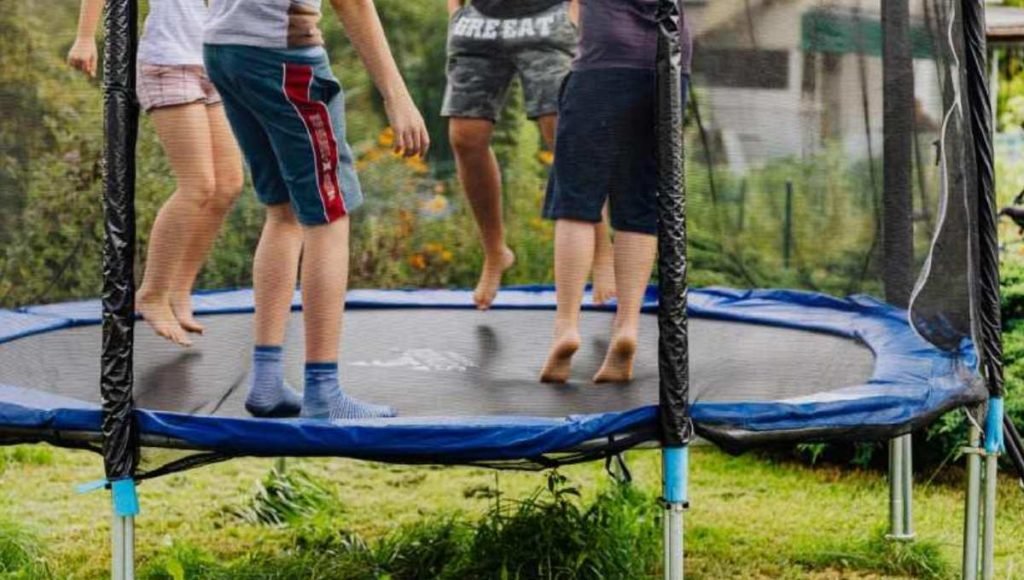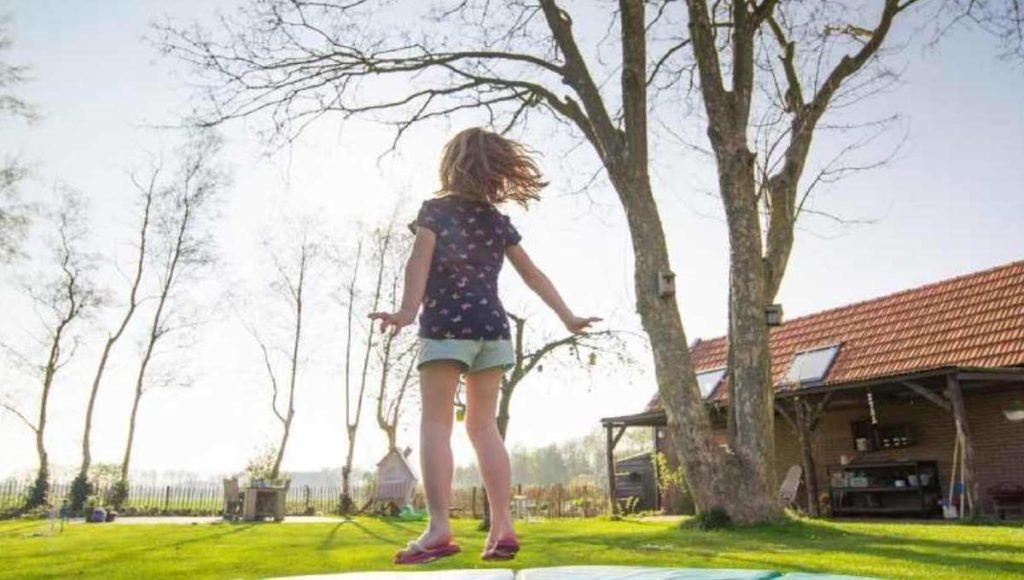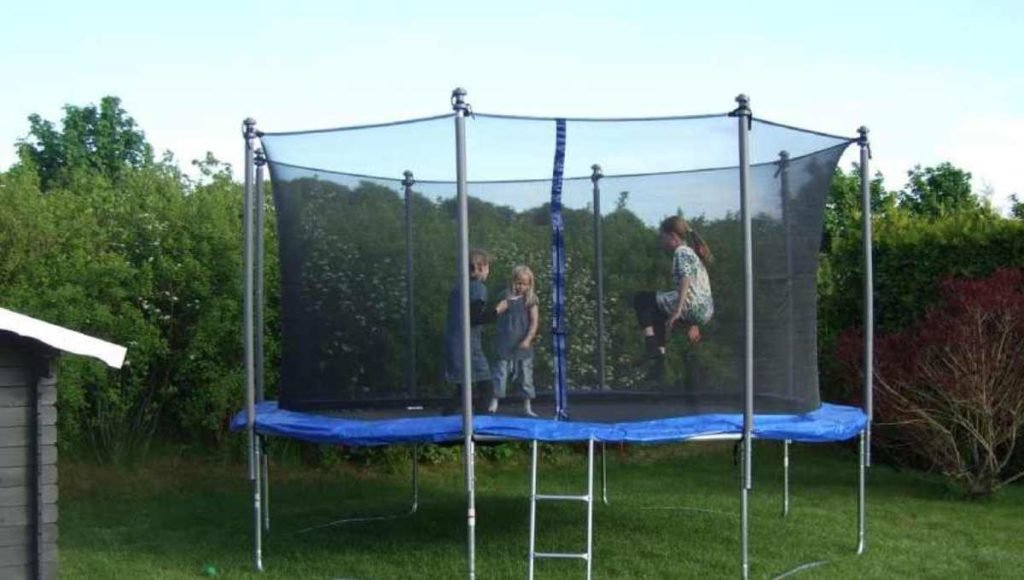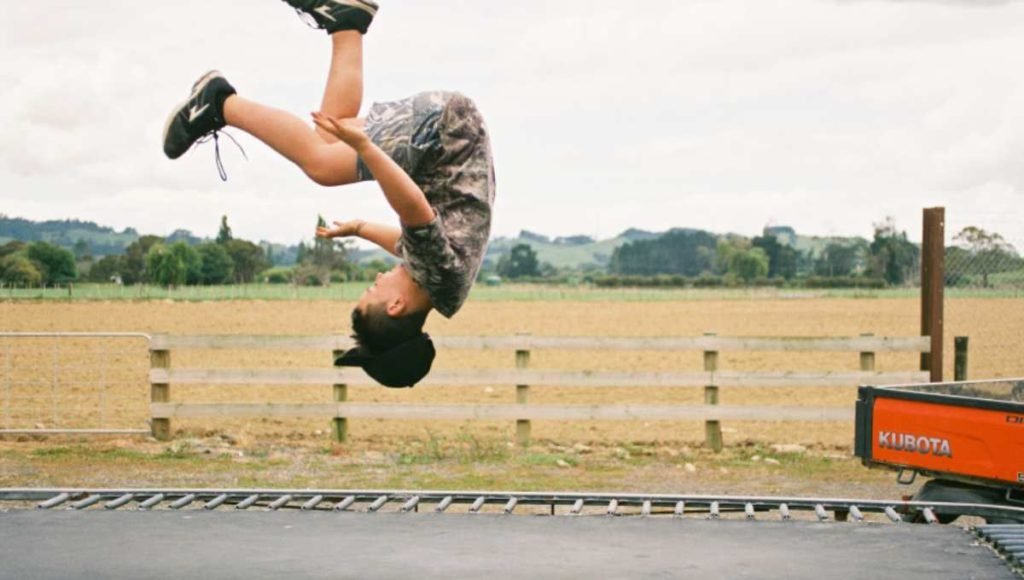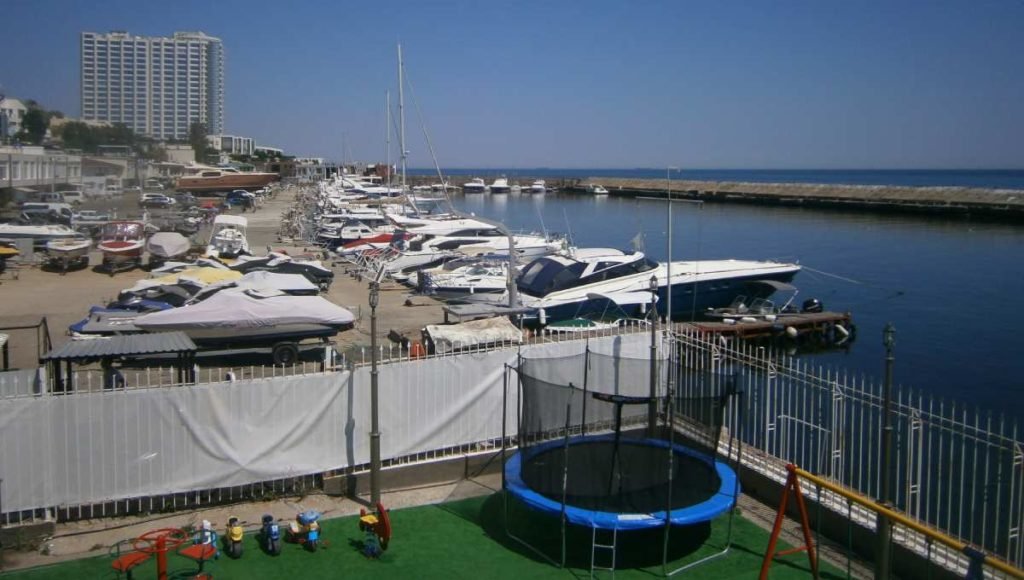Undoubtedly trampoline is one of the funniest, addicted, and entertaining means of exercise. We buy it with a lot of money as it is not a product to use one-time only. Besides, most trampolines are packed with separated parts and we have to assemble them at home. At that moment, we often ask ourselves what trampolines are made of.
Basically, trampolines have different parts and each of them is made of different materials. So, to learn about the materials of the trampoline we have to learn about the parts of the trampoline first. It will help us understand the whole process of forming it properly.
If you are confused about whether to buy a trampoline or not, maybe you are concerned about the safety factor. To get out of your confusion, read the 4 legitimate reasons why Trampolines are safe.
However, this content is all about what trampolines are made of. We will learn about the basic parts of the trampoline, its materials, and how the manufacturers form them. So, if you were ever curious about this fact, just stick your eyes here till the end.
What are the Parts of a Trampoline Made of
We already mentioned that different parts of a trampoline are made of different materials. So, to learn about what are trampolines made of, we need to learn about the specific materials that are used to form parts of the trampolines. Let’s check out the parts of the trampoline.
Trampoline Mat
The basic material of the Jumping mat is polypropylene or nylon. Generally, the jumping mat allows the user to jump up or land and you’ll find this tied to the frame. As it holds the weight so you are suggested to bring a large mat which is made with polyethylene fibers or well-knut nylon.
The durability of your trampoline definitely depends on how strong your jumping mats are or how firmly they can handle the weight. The size of the mat is actually considered as the size of the trampoline. Read this if you want to learn about the ultimate trampoline size guide.
It is actually a recreational device where children or adults like to jump on the surface. Thus it is important to be sure about its flexibility for high-intensity jumps. Surely, It will help to prevent any injury as well.
Additionally, once it is cut down in the right size, the polypropylene fabric is interlocked thermally. So, it makes the surface smoother and people of different ages can jump for hours.
Considering all the circumstances, the trampoline mat is manufactured with nylon and polypropylene material. And these are best for stretching and ensure a good resistance to pressure.
Trampoline Spring Around the Mat
Without a doubt, springs are another essential part of the trampoline. Practically, the spring makes our bounce up and down possible in a trampoline. In general, the high-quality trampoline consists of different springs and that’s located in the middle of the frame and mat.
Although people often use some springless brands, it has the same bounce effect in the beginning. But the elasticity gets loosened after a few jumps and of course, it is less durable compared to spring trampoline.
Thinking about its strength and durability, it is made with rust-resistant steel. Of course, it has to be galvanized. So, even if the trampoline is kept outside in the rain or humid conditions, it won’t be damaged at all.
The manufacturer often chooses spring with long coils. It is definitely useful enough to get a great recoil rather than short coil springs. In the case of shape, tapered springs help to increase lateral stability and it brings a bouncing effect too.
Trampoline Frame
The frame is made of galvanized steel and it prevents rust just like it does in springs. As usual, the rust-resistant steel helps to stand the trampoline even in rain or humid conditions.
Without a proper frame, the trampoline can fall at any time and it won’t be strong enough to support an umpteen number of people. Basically, it helps to create a bouncy surface and keeps it smooth.
Although some of the material of the frame is Aluminum which is not recommended at all. It also makes the structure poor and the chance of breaking gets higher.
Therefore, galvanized steel is strong enough to hold different weights. It plays a central role to keep your trampoline strong and free from rust. Finally, try to inspect the base area and the other parts of the frame regularly to keep it in a good shape.
Safety Pads
Safety Pads play the most crucial role to prevent any trampoline injury. Usually, the pads are placed over the frame, on the spring. It actually uses plush-foam-filled vinyl covers and that saves people from injuries.
This foam can be found in different densities and it depends on the manufactures, use, and type. Actually, it manages the force during landing and makes the jumping smoother on the trampoline surface.
It is often suggested to get high-density pads as it keeps the frame stronger and people can use it for enough time. Talking about the materials, it’s important to note if it’s resistant to ultraviolet radiations, tear-resistant absorbs shock and a few others.
The fiber-reinforced PVC materials are highly used for the safety pads of trampolines. Basically, it is mixed with a polymer matrix reinforced with fiber. And the fiber can be the formation of glass, carbon, or aramid. This material makes it strong enough to carry high-load capacity.
Another material is expanded polypropylene (EPE) and It’s good enough for trampoline safety pads. These are basically small plastic beads and after a few heat-forming processes, it is formed in their shape. Most importantly, it is a durable, lightweight, and recyclable product. Moreover, it has a shock-absorbing capability too.
This is how the safety pad works as a shield and protects us from any trampoline injuries. And aside from these parts, there are two parts that are not generally common in all trampolines. Let’s check what materials are normally used to make these parts.
Spring Alternative
You have already learned that spring is one of the basic parts of a trampoline. But not all trampolines come with this part. Some of them also come with the spring alternative. In this case, high-quality nylon rope or elastic ribbon is used to provide bouncing effects.
Enclosure
The enclosure is another part that is not common in all of the trampolines out there. But it is only seen on the kid’s trampoline. Basically, it is a kind of protection net that prevents kids from falling from the jumping area. And this enclosure net is made of thin nylon rope or fabric fiber.
An enclosure net is undoubtedly an essential part. You can read how to put a net on a trampoline.
So, these are the basic parts of the trampoline and the materials that form those parts. But all the parts alone cannot form a trampoline. Someone has to assemble it properly to form the trampoline. The next part will tell you about it.
But it is another truth that different types of trampolines are made of different parts and materials. So, the information available can be different according to the types of a trampoline. To learn about the types of a trampoline, you can check out the 9 Different types of trampolines.
How the Whole Trampoline Is Made?
Initially, different manufacturers made trampolines in their factories. The first, manufacture the parts of the trampoline one after another. Most often they start it with the frame of the trampoline. They choose their selective material to form it. On the frame, they create holes for the springs to attach to the mat.
Next, they cut the mat fabric to make the appropriate mat. After that, they sew the mat all-around. They sew it with the web strapping that helps increase the reinforcement while jumping on the mat. The manufacturer then uses foam to cover the frame.
Once the mat and the frame are ready, they make the spring and use it to attach the frame and the mat. Next, they form the other parts like the enclosure net, safety net, etc. If the trampoline comes with other specifications like inbuilt basketball hoops, swings, etc, then they set them afterward.
Thus they form the complete trampoline from the raw materials. Most often the trampoline parts are packed separately. The users buy them and assemble them at home following the installation manual.
Conclusion
We have already mentioned that trampolines are of different types and so, they are made with different materials and in different ways. We just described the manufacturer details of the basic and common trampoline. Whatever the types can be, the manufacturer details will be nearly the same everywhere.
If you are a beginner, you should learn about the benefits of using a trampoline. Read about the 11 benefits of rebounding.
So, the question you have is, ‘what are trampolines made of?’ must be clean at this moment. Still, if you have any confusion or question left regarding the fact, feel free to ask anything you want. So, here we take our leave for today. Thank you for your support.


